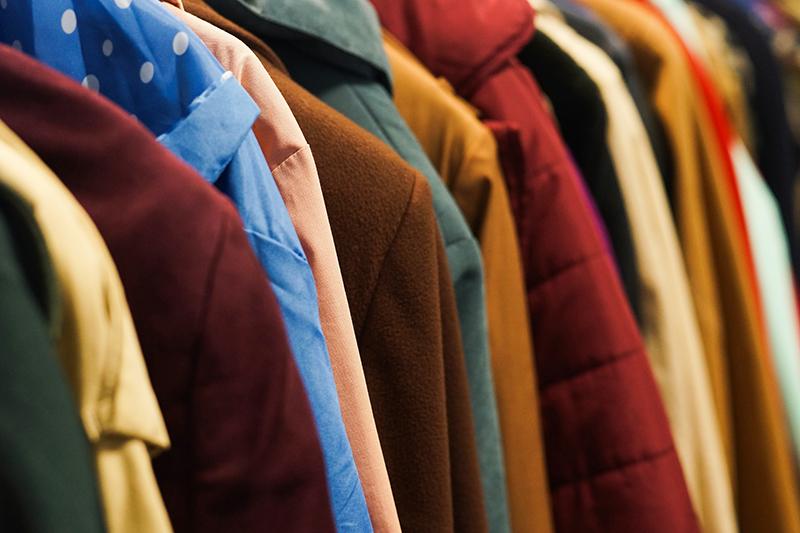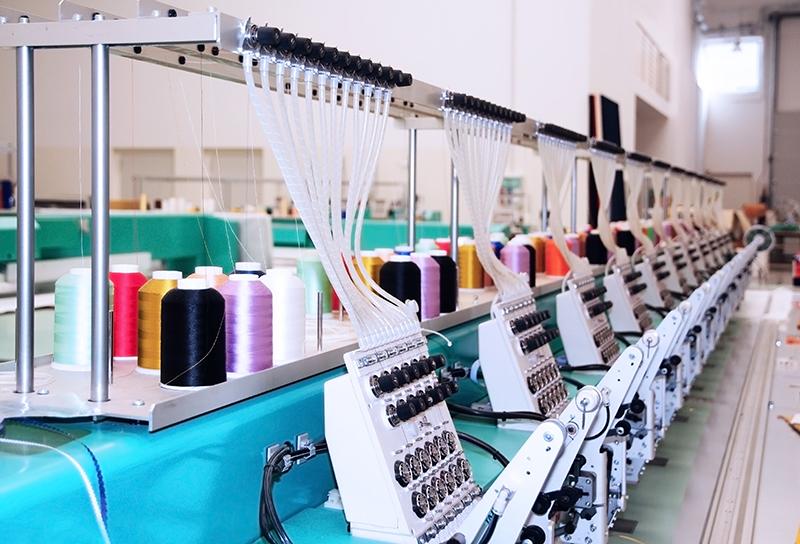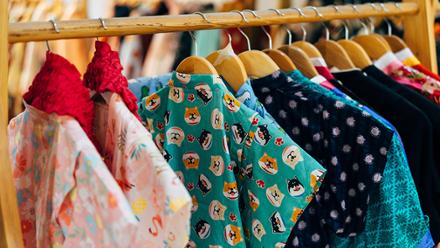Fixing fashion - the route to sustainability
How can we achieve a more sustainable fashion industry? Andrea Gaini uncovered the momentum behind this endeavour at a series of events.

Pollution is the broken gear in the global fashion machine, spiralling the industry’s greenhouse gas (GHG) emissions to around 4% of total emissions worldwide, according to a McKinsey & Company analysis of the sector. This is approximately the same quantity as the entire economies of France, Germany and the UK combined.
At the same time, the fashion industry contributes £35bln each year to the UK economy, employing almost one million people across the country.
‘Fashion in the modern-day parlance is less about keeping warm and having modesty and protecting us from the environment. It's…the most powerful non-verbal communication device that we have as human beings,’ said Dr Mark Sumner, Lecturer in Fashion & Sustainability at University of Leeds, UK, during an online event in March on 'Next steps for the UK fashion industry', organised by the Westminster Business Forum.
‘We talk about ourselves through our clothing. And as a result of that, clothing plays a much more important psychological part in our lives than it has ever done before in history, particularly now we have the impact of social media, and we can project ourselves through those channels…It's about self-identity, it's about self-esteem.’
The ball and chain
Sumner explained that when talking about fashion and its impact on the environment, it is necessary to understand the industry as a system – an industry of industries.
‘The fashion industry is built on agriculture, it's built on the chemical industry. In many ways, it's very dependent on power generation in terms of minimising its carbon footprint.
‘We've got spinners, we've got weavers, we've got garment factories, we've also got the retail operation, and end-of-life, we have to be aware of textile recycling – all of those industries…play a massive part in…what the fashion industry does in terms of its impact on the environment,’ he said.
Sumner clarified that 80-90% of the industry’s environmental impacts are locked in the supply chain, and there are decisions made within that supply chain that are completely detached from the decisions a retailer or designer may make.
‘We're talking about [a] supply chain where we have at least 350 million workers employed [worldwide] and dependent on the fashion industry for their livelihoods…We have fashion supply chains that will cross many sovereign borders, as [a] product is moved from the cotton fields through to its final products and delivered [to] the UK,’ he added.
He suggested the problem in the supply chain is incredibly complex and opaque. In order to minimise the sector’s impacts on the environment, and keeping in mind its impact on communities, a systemic approach needs to be taken.
‘Any solutions that we're putting forward have to take into account the complex nature of this industry of industries, [and] that even if UK Government were to take action, that action has to be mitigated and translated across different sovereign borders, to make sure that we're actually managing and working with local communities and local government.’
Philip Dunne MP, Chair of the UK Environmental Audit Committee, weighed in on the discussion. He pointed to an inquiry the committee conducted, which has found that clothes consumption in the UK is a worrying waste problem during production and the end-of-life.
‘We are very good in this country [at] donating old clothes to charity, we do so more than most other countries. But we also buy more, and we throw more away,’ he said.
He noted that British people buy more clothes compared with other countries in Europe and ‘336,000t [every year] are chucked into wholesale bins and end up in landfill or incinerators’.
For perspective, the Empire State Building weighs roughly the same as the annual amount of clothing thrown away or incinerated.
‘One policy approach, which is gaining popularity around the world as a legal mechanism to reduce waste, is through extended producer responsibility schemes,’ Dunne explained. ‘This approach involves producers bearing at least part of the cost of managing their products at the end of their life, rather than taxpayers or charities picking up the tab.’
For each item placed on the market, a retailer or brand would pay a small fee that would go towards better collection and recycling facilities. Dunne put forward. ‘A charge of just a penny a garment on retailers could raise tens of millions of pounds to invest in better clothing collection and sorting in the UK.’
He concluded, ‘[Such a] scheme in France has seen the number of clothing collection points triple and the amount of clothing being saved from landfill has soared. The new sorting centres that it's funded have created around 1,400 full-time jobs.’
Did you know?
France was the first country in the world in 2007 to make clothing, linen and footwear companies responsible for end-of-life disposal. Any company putting new clothes on the market must either establish their own collection and recycling programme or pay a small fee to an accredited producer responsibility organisation for each garment they put up for sale.
Diamonds in the rough
Professor Dilys Williams, Director of the Centre for Sustainable Fashion at the London College of Fashion, explained that small to medium enterprises (SMEs) have an important role to play.
‘These designers look at a way to demonstrate adaptability and flexibility. They are, as other designers and artists in other fields, usually hands-on and really multi-talented and multi-faceted.
‘They move seamlessly across a plethora of tasks and roles. But this work is seldom recognised or realised, it doesn't fit neatly into the narrow expectations of government or business criteria that are measured primarily in economic growth terms. Alongside this, government policy and business support is predominantly aimed at large entities. Anyone might think that the fashion sector is overly large businesses, the majority of conversation is about large businesses.’
She stressed that SMEs represent an important opportunity for sustainable fashion as they are innovating, they have a support ecosystem that is emerging against the odds and are making progress in addressing the challenges.
‘By bringing together these different elements of sustainable prosperity,’ Williams added, ‘they're not looking just at one element. Fashion design entrepreneurs take a social approach to design and business, [they] are creating new models for living and working that foreground the wellbeing of their businesses and their supply chains,
as well as their customers and…communities around them.
‘This has increased levels of trust, job satisfaction and fair wages, and draws on traditional fashion skills, and often employs UK graduates and people who have come through the education system in this country.’
Birdsong, based in London, UK, was highlighted as an example of this type of business – a social enterprise and fashion brand for people who dress in protest. Founded on the basis that consumers want more ethical and sustainable options, Birdsong was created by Sophie Slater to work ‘with communities who've been decimated by 10 years of austerity funding cuts.
‘We work with really grassroots organisations, rather than factories, who allow their workers space to breathe, have a cup of tea, get holistic support, and most importantly, we pay London living wages and above in creating our collections of original wardrobe,’ said Slater.
She explained that as an SME, one of the biggest challenges they face is funding. ‘There's no rent controls, especially…in the high street for commercial space. But that also means that...a lot of the organisations we've worked with over the years have been forced out.’
She said that another big challenge was competing with large brands who boost their search engine optimisation (SEO) online by buying up keywords that funnel users to their sites when searching for sustainable ethical fashion.
‘We're also paying the same rate in tax as every other brand and something I would suggest is tax breaks for companies with proven and real core, social and environmental contributions.’
Ryan Mario Yasin is the founder of Petit Pli, a fashion SME based in London, UK, which creates garments that ‘grow’ to fit children from
new-born to four years of age. He spoke about funding for SMEs at another event on fashion sustainability, 'Fashion Comes Full Circle: Redesigning a Sustainable Future Through International Collaboration' organised by the Knowledge Transfer Network (KTN).
Yasin participated in Global Expert Missions to US and Paris, which analysed different approaches to sustainable fashion. Reporting on this experience, he said that compared to projects like Station F – a French start-up campus – the UK needed a more centralised approach to funding and support for SMEs.
‘Station F centralised all the information for those businesses that are going through the same issues in one place and makes things much more efficient,’ he explained.
‘I think if we found a way to bring all this together [in the UK too] perhaps the funding could be used slightly more efficiently.’
Fruit for thought
Presented during the Sustainable Innovation 2021 conference in March, Saucolors in Bogotá, Colombia, seeks to address water pollution while dyeing textiles.
Inspired by the colouring of blackbirds’ droppings after eating elderberries in Bogotá, SauColors has created a biodesigned pigment obtained from these fruits.
The anthocyanins give the fruit its colour, specifically, cyanidin is responsible for its purple characteristic. By collecting fruit samples and using a rigorous experimentation system, SauColors has condensed its research into a mathematical formula that can transfer a stable pigmentation onto a textile fabric.
The colour manual is said to offer a local, sustainable and scalable dye alternative to replace chemical dyes that pollute water.

Stemming the flow
Coming back to the concept of circular economy, this idea became much more well known after the European Union adopted it as the future of European economies.
‘At that time, it was often presented in the context of increasing recycling, and to a degree, keeping in circulation for longer things that are already in the market,’ explained Professor Tim Cooper, Head of the Clothing Sustainability Research Group at Nottingham Trent University, UK.
‘And what's necessary now…is that for the circular economy to be implemented fully it has to go right back to the stage of design. So, it's not just the need to understand how to reuse and repair, but also how we design the system.
‘I like to think of the circular economy not closing the loop…[but] about slowing the flow. Essentially, it's about generating more value from the same amounts of material, recognising that vast amounts of value are lost.’
Cooper talked about the issue of embodied carbon. ‘In garments in particular, when one is recycling, one is using carbon again to break down the use of material into constituent fibres then remaking the fabric into new garments. Whereas reusing the fabric is a way that reduces that energy impact.’
Over the last eight years, the UK Waste and Resources Action Programme (WRAP) has worked with the sector through the Sustainable Clothing Action Plan, to reduce the carbon, water and waste footprints of clothing sold in the UK through improvement actions e.g. choice of fibre, amount of clothing collected and reused. Signatories also sought to influence consumer behaviour through the Love Your Clothes campaign.
‘Through collaborative action, our brand and retailer signatories have reduced the carbon footprint of new products sold by nearly 16% and reduced their water footprint by nearly 20%,’ said Catherine Salvidge, Sustainable Textiles Sector Specialist at WRAP.
In April this year, WRAP launched Textiles 2030, a voluntary agreement presenting ambitious targets to reduce the industry's carbon emissions by 50% by 2030, in line with the 2016 Paris Agreement, as well as decreasing its water footprint by 30%.
Textiles 2030 focuses on three areas of circularity that will deliver impact savings through industry collaborations.
Salvidge added, ‘Firstly, [we] will be designing products to the principles of circular economy. So that products are designed to be used more [and]…reused, repaired and finally recycled at the end of their life.
‘Then [we will] also focus on how we can make circular business models the norm, through increasing the amount of clothing acquired through models such as reuse, rental and subscription, and how we can influence consumer behaviours to adopt these business models and more responsible consumption habits.
‘And then finally, looking at how we close the loop on materials…This will involve bringing the whole textile value chain together to accelerate the ability for fibre-to-fibre recycling in the UK, and also to drive the demand for cycle fibres from brands and retailers.’
Ultimately, the goal Salvidge says is ‘that a circular economy would slow down the consumption of new products, reduce the demand for virgin materials and therefore help cut the carbon emissions and water footprint associated with the primary production of textiles’.
Out of fashion
- 93bln m³ – of water used worldwide in textile production each year
- 1.7Bt – of greenhouse gas emissions emitted in global textile production in 2015
- 26% – of the world's Carbon Budget will be used by the fashion industry by 2050
- ¼ – of the industry's resources are wasted in fabric leftovers
- £140mln – worth of clothing goes to landfill each year worldwide
- 160Mt – of clothing will be produced by 2050 per annum globally








